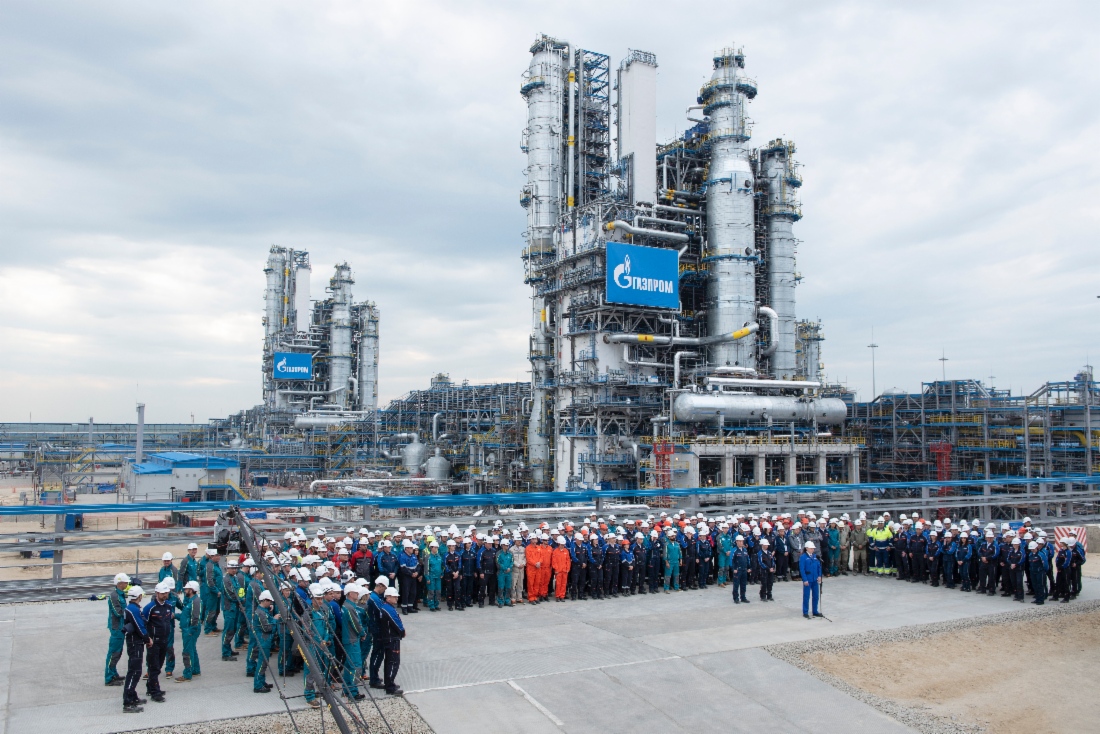Gazprom’s Amur Gas Processing Plant Nearing Completion
Special to P&GJ
Gazprom’s Amur Gas Processing Plant (GPP) project is more than 75% complete following its commissioning ceremony for the first production train earlier this month, the company announced.

The Amur GPP is near the town of Svobodny, Amur Region in Russia. With a design processing capacity of 42 billion cubic meters of gas per year, the GPP is going to become the main enterprise for advanced gas processing in Russia’s Far East. The plant receives multi-component gas via the Power of Siberia gas pipeline from the Chayandinskoye field (Yakutia); later on, it will also receive gas from the Kovyktinskoye field (Irkutsk Region).
The fundamental principle that underpinned the project was the necessity to process within the Russian Federation the multi-component gas fed from Power of Siberia.
The construction of the first production train of the Amur GPP was finished on schedule. The commissioning of the next five trains is synchronized with increases in the volumes of gas transmitted via Power of Siberia. In 2025, the GPP will reach its full design capacity.
On the third and fourth production trains, the equipment for gas separation is fully installed, pipes and cables are being laid, insulation materials are being applied, and metal structures are being assembled and provided with fire-retardant coating. On the fifth train, the foundation works are completed, and preparations are underway for the installation of the ethane and methane separation columns, as well as gas compressor units. On the sixth train, the pouring of foundations and the assembly of metal structures are in progress.
The latest campaign for the delivery of heavy equipment to the GPP by river and sea vessels is now running. During the navigation season this year, it is planned to bring 51 pieces of heavy cargo with a total weight of 5,500 tons to the construction site.
In addition, the logistics center for the servicing of thermally-insulated helium containers (the helium hub) near the city of Vladivostok will soon be put in operation. The center is needed to deliver liquid helium from the Amur GPP to the global market.
Containers with liquid helium will be transported between the GPP, the hub, and the ports of the Primorye Territory via freight trucks powered by LNG. A small-scale LNG plant was built at the hub with the purpose of refueling vehicles.
The implementation of such an ambitious project in gas processing has no parallel in the history of Russia’s gas sector.
The products of the Amur GPP include sales gas (methane) and the components extracted from this gas, which are valued in the gas chemical and other industries. Operating at full capacity, the GPP will use cutting-edge equipment and cryogenic technologies to produce 2.4 million tons of ethane, 1.5 million tons of liquefied petroleum gases (LPG), and 200,000 tons of pentane-hexane fraction. The primary consumer of the GPP’s ethane and LPG will be the Amur Gas Chemical Complex (a joint project of SIBUR and Sinopec).
Related News
Related News

- Keystone Oil Pipeline Resumes Operations After Temporary Shutdown
- Freeport LNG Plant Runs Near Zero Consumption for Fifth Day
- Biden Administration Buys Oil for Emergency Reserve Above Target Price
- Mexico Seizes Air Liquide's Hydrogen Plant at Pemex Refinery
- Enbridge to Invest $500 Million in Pipeline Assets, Including Expansion of 850-Mile Gray Oak Pipeline




Comments